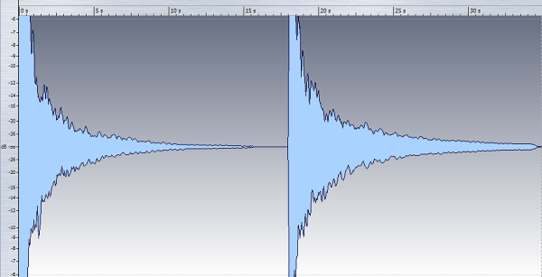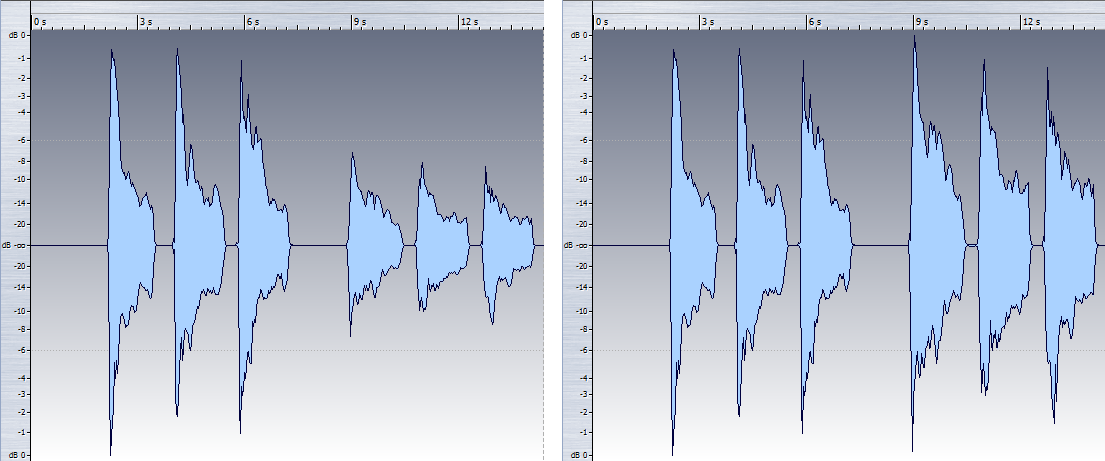Just a few millimeters can make a major difference in your guitar’s sustain
How much difference does 2 millimeters makes? A lot, actually. Look at the main image above; the left window shows the difference in output between having the pickups 2 mm away from the strings (left) and 4 mm away (right). At 4 mm away, the peak level went down about 8 dB. But in the right window, both have been normalized to the same peak level. Clearly, the one that’s 4 mm away has a higher average level (of course, you can always compensate for any peak level differences at your amp or audio interface input). The closer the pickup is to the strings, the more the level drops off rapidly after the initial transient. In the far position, the transient is lower, and there’s a more consistent average level that leads to more sustain. The following image shows the sustain at the end of a note in more detail.

In the above image, see what happens when you normalize the two signals. In the second waveform, which is from the pickup in the far position, look past the transient: the average level is higher, and the sustain is stronger.
Even better, the reduced transient response with the pickups further away from the strings is helpful when feeding compressors, because the gain control action is smoother; large transients tend to “grab” the compressor’s gain control mechanism, which can create a “pop” as the compression kicks in. Also, amp sims generally don’t like transients as they consist more of “noise” than “tone,” so they don’t distort elegantly. Reducing transients can give a less harsh sound with a note’s attack.
So what about the lower overall level? Just turn up the input control on your interface, or the drive control in your amp or amp sim to compensate.
If you’ve set your pickups up close to your strings for more level, try moving them further away and applying more gain. You’ll like the extra sustttaaaiiinnn.
